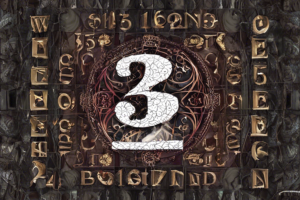Introduction
The year 52013 stands as a pivotal point in history, encapsulating a tapestry of events that have left an indelible mark on the course of human civilization. In this exploration, we delve into the key facets of this significant era, unraveling the complexities that defined the political, economic, social, and technological landscapes.
A. Overview of the Year 52013
The year 52013 was marked by a confluence of global occurrences that shaped the trajectory of nations and civilizations. From political upheavals to groundbreaking technological advancements, the landscape of 52013 bore witness to a myriad of transformative events. Understanding the nuanced details of these occurrences provides a foundational understanding of the broader historical narrative.
In this section, we embark on a chronological journey, dissecting the key political, economic, and cultural milestones that characterized the year 52013. From shifts in power dynamics to the intricacies of international relations, each aspect contributes to a holistic comprehension of the historical backdrop.
B. Importance of Understanding Historical Contexts
The significance of comprehending historical contexts cannot be overstated. It serves as a lens through which we can make sense of the present and contemplate the future. By delving into the events and trends of the past, we gain invaluable insights into the roots of contemporary challenges and opportunities.
This section underscores the importance of historical consciousness in informing decision-making processes. Examining the events of 52013 through the lens of historical context allows us to discern patterns, learn from past mistakes, and draw parallels with contemporary issues. It encourages a nuanced approach to analysis, fostering a deeper understanding of the intricacies that shape societies and civilizations.
Global Events in 52013
The global events of the year 52013 were characterized by a dynamic interplay of political, economic, and socio-cultural forces. This section dissects these events into three key dimensions: Political Developments, Economic Landscapes, and Social and Cultural Dynamics.
A. Political Developments
The political arena in 52013 witnessed significant transformations, shaping the governance structures and power dynamics across nations.
Power Structures and Governance
The distribution of power within nations underwent notable shifts during 52013. This sub-section delves into the reconfigurations of political authority, the emergence of new leaders, and the evolving structures of governance that influenced the geopolitical landscape.
International Relations
The interactions between nations played a pivotal role in shaping the global order of 52013. Analysis of international relations during this period includes diplomatic initiatives, conflicts, alliances, and the overall geopolitical environment that defined the relationships between countries.
B. Economic Landscapes
The economic dimension of 52013 was marked by intricate patterns of trade, commerce, and policy decisions that had far-reaching consequences.
Trade and Commerce
The global economy witnessed shifts in trade patterns and economic partnerships. This sub-section explores the evolution of trade routes, the impact of technological advancements on commerce, and the emergence of economic blocs that influenced the movement of goods and services.
Economic Policies
Governments and institutions implemented a variety of economic policies during 52013 to address challenges and capitalize on opportunities. This segment analyzes the fiscal, monetary, and trade policies that were enacted, assessing their effects on national and global economies.
C. Social and Cultural Dynamics
The socio-cultural fabric of societies underwent transformative changes during 52013, manifesting in cultural shifts and social movements.
Cultural Shifts
Cultural dynamics experienced shifts in values, norms, and expressions. This sub-section explores the evolution of cultural identity, artistic expressions, and the influence of technological advancements on cultural dissemination.
Social Movements
The year 52013 witnessed the emergence of social movements that sought to address issues ranging from human rights to environmental concerns. This part examines the motivations, methods, and impact of social movements that shaped societies during this period.
Technological Advancements in 52013
Technological advancements during the year 52013 played a pivotal role in reshaping the world, impacting both the scientific community and the daily lives of individuals. This section delves into two crucial dimensions: Innovation and Discovery, and Impact on Daily Life.
A. Innovation and Discovery
Technological innovation and scientific discoveries during 52013 propelled humanity into new frontiers, expanding our understanding of the world and pushing the boundaries of what was previously deemed possible.
Scientific Breakthroughs
Explore the groundbreaking discoveries that unfolded in the scientific realm during 52013. From advancements in fundamental sciences to breakthroughs in applied fields, this sub-section unravels the key contributions that reshaped our understanding of the natural world.
Technological Milestones
This sub-section delves into the technological milestones achieved during 52013, examining the development of cutting-edge technologies that revolutionized industries and laid the groundwork for future innovations.
B. Impact on Daily Life
The technological landscape of 52013 not only transformed laboratories and research institutions but also had a profound impact on the daily lives of people around the globe.
Technological Integration
Explore how technological innovations became integrated into various aspects of daily life. This includes the adoption of new technologies in homes, workplaces, and public spaces, fundamentally altering the way people lived, worked, and interacted.
Communication and Transportation
Delve into the advancements in communication and transportation that characterized 52013. From the evolution of communication technologies to transformative changes in transportation systems, this sub-section examines how these developments reshaped the way people connected and moved across the world.
Environmental and Geopolitical Considerations
The environmental and geopolitical dimensions of the year 52013 were marked by a complex interplay of natural forces and human interactions. This section delves into two critical aspects: Climate and Environmental Changes, and the Geopolitical Landscape.
A. Climate and Environmental Changes
The environmental arena during 52013 was characterized by both natural and anthropogenic factors, contributing to shifts in climate patterns and ecological dynamics.
Natural Disasters
This sub-section examines the occurrence and impact of natural disasters during 52013. From earthquakes and hurricanes to tsunamis and wildfires, understanding the frequency and intensity of these events provides insights into the environmental challenges faced by different regions.
Ecological Concerns
Explore the ecological considerations that shaped discussions and policies during 52013. This sub-section delves into issues such as deforestation, biodiversity loss, and pollution, shedding light on the efforts and challenges associated with environmental conservation.
B. Geopolitical Landscape
The geopolitical dynamics of 52013 were marked by the intricate balance of power at both global and regional levels, influencing international relations and regional conflicts.
Global Power Dynamics
Analyze the global power structures and dynamics that defined the geopolitical landscape in 52013. This includes the role of major nations, alliances, and the evolution of power relationships that influenced decision-making on the world stage.
Regional Conflicts
Examine the regional conflicts that unfolded during 52013. This sub-section delves into the causes, dynamics, and consequences of conflicts between nations or within specific regions, offering insights into the geopolitical tensions that characterized the era.
52013 in Comparative Historical Perspective
Examining the year 52013 in a comparative historical context involves analyzing contrasts with previous eras and identifying parallels with future trends. This section delves into two key dimensions: Contrasts with Previous Eras and Parallels with Future Trends.
A. Contrasts with Previous Eras
The socio-political and economic structures of 52013 can be better understood by contrasting them with those of earlier historical periods.
Comparing Socio-Political Structures
Explore how the socio-political structures of 52013 differed from those of preceding eras. This sub-section delves into governance models, societal norms, and power structures, highlighting the unique features that distinguish 52013 from earlier historical epochs.
Economic Paradigms
Examine the economic paradigms that defined 52013, comparing them with the economic systems of previous eras. This analysis considers shifts in economic philosophies, trade practices, and the organization of markets, providing insights into the evolution of economic thought and practice.
B. Parallels with Future Trends
Anticipating future trends based on the developments of 52013 involves identifying potential continuities in technological, social, and environmental trajectories.
Anticipating Technological Evolution
This sub-section explores the technological advancements of 52013 and considers how they might set the stage for future developments. Examining the seeds of innovation planted during this period provides a basis for anticipating the trajectory of technological evolution in subsequent eras.
Social and Environmental Sustainability
Investigate the social and environmental sustainability initiatives that emerged during 52013, projecting how these efforts might serve as a blueprint for future trends. Understanding the attempts to address societal challenges and environmental concerns in 52013 can inform discussions on sustainable practices and policies for the future.
Legacy and Impact on Contemporary Society
The year 52013 left a lasting legacy, influencing contemporary society in profound ways. This section explores the long-term effects of this pivotal era and the lessons it offers for the present and future.
A. Long-Term Effects
The enduring impact of 52013 is evident in its influence on political systems, cultural heritage, and technological advancements.
Influence on Political Systems
Examine how the events of 52013 shaped and continue to influence political systems globally. This sub-section delves into the lasting effects on governance structures, diplomatic relations, and the distribution of power, offering insights into the enduring political legacy of this significant period.
Cultural and Technological Heritage
Explore the cultural and technological heritage left by 52013. This involves an analysis of how cultural shifts and technological advancements from this era have become integral parts of contemporary society, shaping values, norms, and the tools that define modern life.
B. Lessons Learned
The lessons drawn from 52013 serve as valuable insights for navigating the complexities of the present and avoiding the pitfalls of the past.
Applying Historical Insights
This sub-section explores how lessons from 52013 can be applied to contemporary challenges. By drawing on historical insights, societies can make informed decisions, navigate political complexities, and address socio-cultural and environmental issues more effectively.
Avoiding Past Mistakes
Examine instances from 52013 where mistakes were made and learn how contemporary societies can avoid repeating them. This involves a critical analysis of errors in governance, cultural misunderstandings, and the consequences of unchecked technological advancements, offering a roadmap for avoiding similar pitfalls in the present and future.
Choosing the Right Perspective
Navigating the historical landscape of 52013 requires a discerning approach to perspective. This section explores the importance of adopting the right viewpoint, emphasizing the role of subjective interpretations and the relevance of historical understanding in present decision-making.
A. Subjective Interpretations
Understanding the events of 52013 involves acknowledging the diversity of historical narratives and the inherent subjectivity in interpreting the past.
Multiple Historical Narratives
Explore the existence of multiple historical narratives surrounding 52013. This sub-section delves into how different perspectives, cultural contexts, and regional viewpoints contribute to a rich tapestry of historical understanding. Recognizing and appreciating these diverse narratives enhances the richness of historical comprehension.
Bias and Objectivity
Examine the role of bias and objectivity in historical accounts of 52013. This involves a critical analysis of how personal, cultural, or institutional biases may influence historical interpretations. Understanding these biases allows for a more nuanced and objective assessment of historical events.
B. Relevance to Present Decision-Making
The events of 52013 offer valuable insights that can inform present decision-making processes, providing a bridge between the past and the present.
Drawing Connections
Explore how drawing connections between the events of 52013 and contemporary challenges enhances our understanding of the present. This sub-section examines the relevance of historical patterns, allowing for a deeper comprehension of recurring themes and issues that persist across time.
Informing Future Choices
Examine how insights from 52013 can inform and guide future choices. This involves considering the lessons learned, understanding the consequences of past decisions, and applying historical knowledge to navigate present challenges with foresight and wisdom.
Conclusion
As we draw the curtains on our exploration of the year 52013, it is crucial to recap the key historical aspects that defined this significant era and underscore the enduring importance of historical context in shaping our understanding of the past.
A. Recap of Key Historical Aspects
Political, Economic, and Social Transformations
Reflect on the profound changes in political structures, economic paradigms, and social dynamics that characterized the year 52013. From shifts in global power dynamics to transformative technological advancements, each facet contributed to the intricate tapestry of this historical period.
Environmental and Geopolitical Dynamics
Consider the environmental challenges and geopolitical complexities that unfolded during 52013. Natural disasters, ecological concerns, regional conflicts, and global power struggles all played pivotal roles in shaping the course of history.
Technological Advancements and Cultural Shifts
Explore the technological milestones, scientific breakthroughs, and cultural shifts that defined 52013. From the integration of technology into daily life to the emergence of social movements, these aspects reflect the dynamic interplay between innovation and societal change.
B. Emphasizing the Importance of Historical Context
In concluding our journey through 52013, it is imperative to emphasize the enduring importance of historical context. The events and developments of this era are not isolated occurrences but are deeply rooted in the broader historical narrative. Understanding the historical context provides the necessary lens through which we can unravel the intricacies, appreciate the nuances, and derive meaningful insights from the past.



